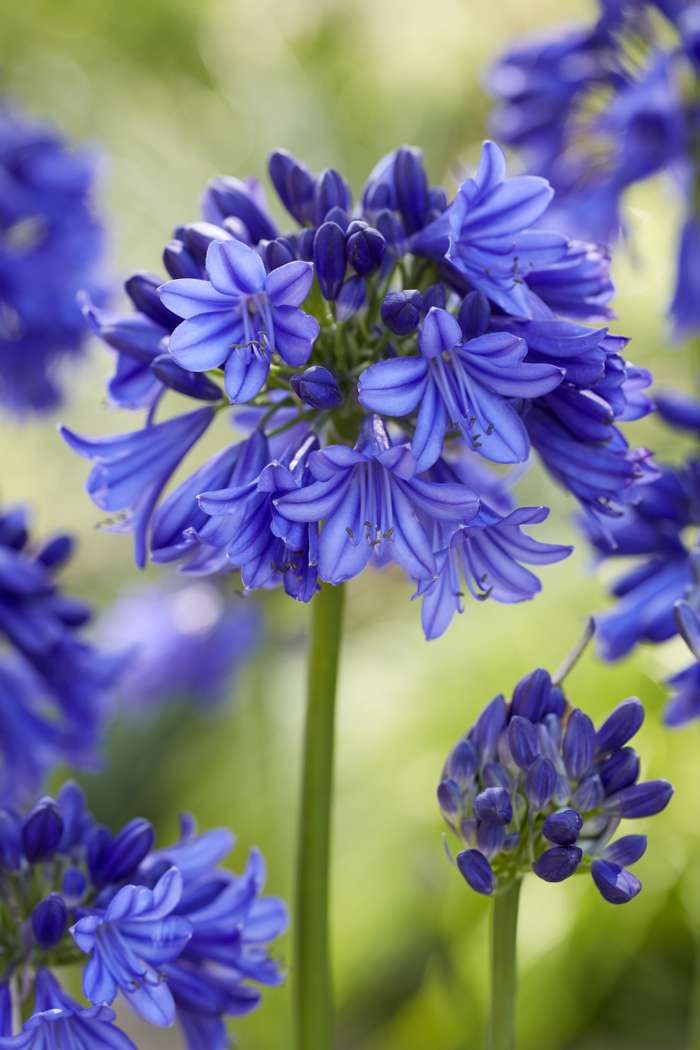How to Plant and Maintain Agapanthus in Your Garden
How to Plant and Maintain Agapanthus in Your Garden
Blog Article
Grasping the Art of Agapanthus Care: Vital Steps for Healthy Growth and Vibrant Flowers
In the world of horticulture, the farming of agapanthus stands as a gratifying endeavor for those who look for to support these sophisticated blooming plants. From selecting the best range to understanding pruning strategies, the journey towards cultivating thriving agapanthus plants is diverse and holds the vital to opening the full possibility of these agricultural gems.

Picking the Right Agapanthus Range

When selecting the ideal Agapanthus variety for your yard, think about variables such as environment viability, bloom shade, and development habit. Agapanthus, typically understood as Lily of the Nile or African lily, comes in a variety of shades varying from tones of purple and blue to white. Pick a blossom shade that complements your existing garden combination to create a harmonious landscape. Furthermore, think about the environment in your region to ensure the Agapanthus variety you choose can flourish in your specific problems. Some ranges are much more tolerant of chilly temperature levels, while others favor warmer environments. Understanding the development habit of various Agapanthus selections is crucial for appropriate placement within your garden. Some varieties have a clumping growth practice, ideal for borders or containers, while others have a more dispersing nature, ideal for ground cover or mass growings. By very carefully assessing these variables, you can select the perfect Agapanthus range to enhance the appeal of your garden.
Perfect Growing Conditions
Thinking about the optimum ecological demands is important for effective Agapanthus growing. Agapanthus thrives in well-draining soil with a somewhat acidic to neutral pH degree. When growing, select an area that gets complete sunlight to partial color. In hotter climates, supplying some afternoon shade can protect against scorching of the fallen leaves. Agapanthus plants are delicate to cold temperatures and need to be shielded from frost during winter season.
To guarantee healthy and balanced development and vivid blossoms, plant Agapanthus bulbs at a deepness of about 2-4 inches and area them 8-12 inches apart. Mulching around the base of the plants helps preserve moisture and suppresses weed growth.
Watering and Feeding Tips
Maintaining correct dampness degrees and giving important nutrients are crucial aspects in the treatment regimen for Agapanthus plants. When it comes to watering Agapanthus, it is critical to strike an equilibrium. These plants choose constantly moist soil however are prone to root rot if overwatered.
Fertilizing Agapanthus is important for advertising healthy development and respected blooms. Use a well balanced plant food, such as a 10-10-10 formula, in the early springtime as brand-new development arises. Repeat this application every 6-8 weeks throughout the growing season. Stay clear of extreme fertilizing, as it can bring about rich vegetation at the expense of flowers. Always comply with the supplier's instructions for appropriate dilution and application techniques. By following these watering and feeding tips, you can guarantee your Agapanthus plants flourish and produce lively, long-lasting flowers.
Trimming Methods for Agapanthus
Pruning Agapanthus plants at the proper times and with proper techniques is crucial for keeping their health and wellness and advertising optimum development and flowering. The excellent time to prune Agapanthus he said is in late winter season or early springtime prior to new growth emerges.
For flowered stems, wait until the blossoms have withered and then trim them back to the base. This not just cleans the plant's look however likewise encourages the advancement of brand-new flower buds. Deadheading spent blossoms can also redirect the plant's energy right into producing even more flowers instead of setting seeds. Nonetheless, if you intend to accumulate seeds for breeding, leave some blossoms to fully grown and dry on the plant.
Keep in mind to use tidy, sharp devices to make accurate cuts and minimize the risk of introducing diseases. Agapanthus. Routine pruning will assist keep your Agapanthus looking healthy and balanced and cool while making certain a plentiful screen of stunning flowers
Managing Usual Insects and Illness
After making certain proper trimming techniques for Agapanthus, it is necessary to address usual parasites and diseases that can influence the health and wellness and vigor of these plants. Agapanthus plants are usually durable but can still come down with specific issues. One usual insect that impacts Agapanthus is the Agapanthus gall midget. This little, orange fly lays its eggs in the foliage, resulting in altered development and flower buds that fail to open. To fight this parasite, trim and ruin any afflicted plant parts and take into consideration using insecticidal soap.
Additionally, Agapanthus plants Continue can endure from root rot if they are planted in improperly draining pipes soil. By being attentive and taking timely activity against bugs and diseases, you can assist your Agapanthus plants thrive and generate dynamic blooms. Agapanthus.
:max_bytes(150000):strip_icc()/agapanthus-growing-guide-7368912_04-66a3f4cf245b4332b28954dd37c784f5.jpg)
Conclusion
In verdict, grasping the art of agapanthus care includes selecting the best browse this site selection, offering ideal planting problems, proper watering and fertilizing, ideal trimming techniques, and resolving usual insects and illness. By following these important steps, you can make certain healthy development and dynamic blossoms for your agapanthus plants. Keep in mind to consistently monitor and preserve your plants to promote their general health and durability.
To make sure healthy growth and vibrant flowers, plant Agapanthus light bulbs at a deepness of concerning 2-4 inches and space them 8-12 inches apart. By following these watering and feeding pointers, you can ensure your Agapanthus plants prosper and produce lively, long-lasting blossoms.
One common insect that influences Agapanthus is the Agapanthus gall midge. In addition, Agapanthus plants can experience from root rot if they are planted in inadequately draining soil. By complying with these crucial actions, you can guarantee healthy and balanced development and lively flowers for your agapanthus plants.
Report this page